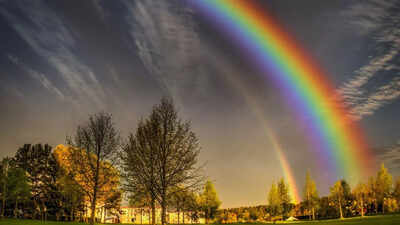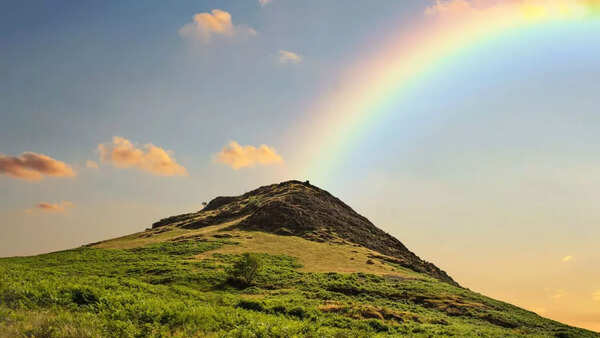ARTICLE AD BOX

These days, it’s common to see rainbow photos flooding social media right after it rains. Whether they appear over crowded city streets or quiet fields, rainbows always catch people’s eyes.
They might look magical or surprising, but there’s actually a simple reason why they appear.Rainbows don’t just happen by chance. They form only when certain conditions in nature come together. It all starts when sunlight hits tiny water droplets in the air. The way the light bends and reflects inside those droplets creates the beautiful arc of colours we see in the sky.Conditions that make a rainbow possibleA rainbow doesn’t show up every time it rains– it only appears when a few specific things happen at once.
The sun needs to be behind you and low in the sky, which usually happens early in the morning or late in the evening. There also have to be water droplets in the air, often after rain, drizzle, or mist. When all these conditions come together, they create the beautiful arc of colours we know as a rainbow.

What happens to sunlight inside a water droplet?Sunlight might look white to us, but it's actually made up of many different colours. When this light enters a raindrop, it slows down and bends– a process called refraction.
This happens because the light is moving from air into water, which is denser.Inside the droplet, the light bounces off the inner surface– this is called reflection. Then, as it leaves the droplet, it bends again. This bending and bouncing cause the light to spread out into its different colours, like red, green, and violet, creating the rainbow we see.Why the colours appear in an arcAs explained by the Physics Classroom website, we see a rainbow in a curved shape because each colour of light leaves a raindrop at a slightly different angle.
For instance, red light comes out at about 42 degrees, while violet light exits closer to 40 degrees.

This tiny difference in angles causes the light to spread out into separate colours by the time it reaches our eyes. And when we’re standing at the right spot, these colours come together to form the arc-shaped rainbow we see in the sky.Role of droplet size and light conditionsAccording to a report presented by the Met Office website, water droplets are key to forming a rainbow, but their size also affects how the rainbow looks.
Larger droplets create brighter and more vivid colours, while smaller ones– like those found in fog or mist– produce rainbows that are much fainter and less clear.In such cases, you might see a fogbow instead. It looks almost white because the tiny droplets don’t separate the colours well, making the rainbow appear pale and colourless.

Are there always seven colours?We’re often taught that a rainbow has seven colours: red, orange, yellow, green, blue, indigo, and violet. But in reality, it’s not that simple. The colours in a rainbow blend smoothly into one another, without any sharp lines separating them.How many colours you actually see can depend on things like the lighting and how sensitive your eyes are to small differences in colour. So, while seven is a common way to describe it, a rainbow is really a continuous mix of shades.



.png)
.png)
.png)
















 5 days ago
5
5 days ago
5









 English (US) ·
English (US) ·